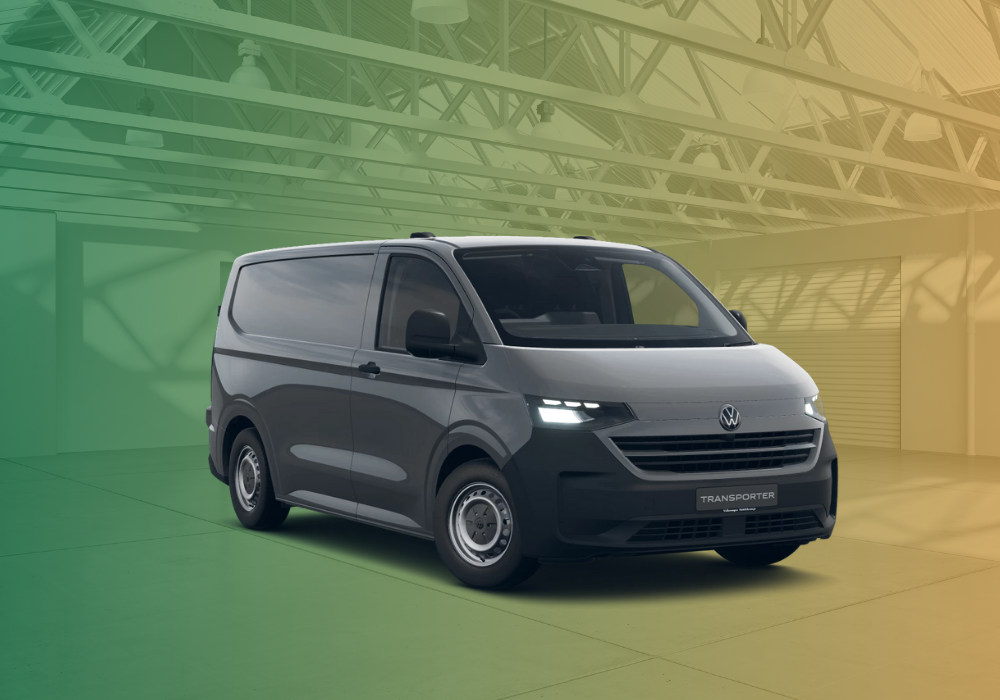Quick summary
T6.1 = familiar, proven, huge conversion ecosystem, simple diesel options and a trusted second-hand market. Great for converters, tradespeople and anyone who values predictability.
T7 (2025) = larger interior, modern cabin & safety tech, multiple powertrains including full electric (BEV) and cleaner diesels, and updated payloads; a more future-proof choice for ULEZ and emissions-conscious buyers.
1. Platform, partnerships and what that means
The T6.1 is the latest evolution of Volkswagen’s long-running Transporter line; mechanically familiar and well established. The T7, introduced for model year 2025, represents a bigger change: Volkswagen developed the new Transporter with closer technical collaboration and shared underpinnings with other modern commercial-van platforms. That explains why the T7 feels different in packaging and driving dynamics compared with the T6.1.
2. Size, load space and payload — real world matters
Space is where the T7 really shines. The new Transporter gains both length and width compared with the T6.1: the wheelbase is longer and the load compartment has been increased so it’s noticeably easier to load Euro pallets or bulky kit. In panel-van form the T7’s load volumes and payload figures are up on the T6.1 in most comparable layouts; meaning conversions and pallet work are simpler in practice.
By way of contrast, the T6.1 has long offered payloads and load volumes that made it the go-to for converters and tradespeople; but the T7's slightly wider load bay and longer wheelbase make conversions (and pallet handling) easier in many cases. If you frequently carry bulky loads or need to fit a Euro pallet with ease, the T7 is an important upgrade.
3. Engines, electrification and running costs
The T6.1 relied heavily on Volkswagen’s established 2.0 TDI diesel range (manuals and automatics, plus 4MOTION on some models). The T7 introduces a broader choice: multiple diesel tunes (commonly 110, 150 and 170 PS in the UK market) and full-electric Transporter (BEV) variants for commercial use, with mid-sized battery packs suitable for urban routes. There are also hybrid/plug-in variations in the wider range plans.
Quick tradeoff: diesel T7s remain the most pragmatic for long distances and heavy towing, while BEV T7s cut running costs in town and avoid many emissions charges; but add charging planning and higher purchase prices to the equation. For many UK operators the mix of diesel and electric gives flexibility to match routes and budgets.
4. Technology, safety and cab comfort
The T7’s cabin is a step up: modern infotainment, digital displays, improved driver aids such as adaptive cruise and lane-keeping assist in higher trims, plus greater connectivity for fleet telematics. For day-to-day driving that can make long trips more pleasant and safer. The T6.1 has solid ergonomics and simpler electronics; which some owners prefer for reliability and ease of aftermarket conversions, but it doesn’t match the T7 for factory-fitted tech.
5. Conversion & camper considerations
If you convert vans (or buy converted campervans), this is huge: the T6.1 benefits from years of purpose-built furniture kits, pop-top crowns and shelving systems, so conversion companies could work quickly and cost-effectively. The T7’s different floorplan, slightly wider load bay and, for BEV models; batteries or different underfloor packaging mean converters need to adapt layouts and wiring. For a new build designed around a T7 (especially a BEV T7) you’ll gain modern comforts and more usable width; for retrofit-heavy businesses the T6.1 remains faster to work with in the short term.
Tip: If you run conversion work, start planning T7-specific fitments now, width and battery locations are the two biggest changes to account for.
6. Costs, warranty & resale
New T7s carry a modern-spec premium and early-adoption risk, but VW’s UK offering includes competitive warranty terms and dealer packages that make the new model attractive for fleets. The T6.1’s used market remains strong, proven reliability and a thriving conversion market keep values healthy. If short-term cost and predictability matter more than future emissions compliance, the T6.1 remains a sensible buy.
7. ULEZ, emissions zones and practical fleet advice
For UK operators the availability of BEV and cleaner diesel T7 options makes it simpler to future-proof operations in expanding ULEZ or Clean Air Zone areas. If many of your routes are urban, an electric T7 (or a low-emission diesel) will massively reduce daily charges and may offer better total cost of ownership despite higher purchase cost. If you’re predominantly motorway-heavy or need maximum towing range, diesel remains the pragmatic workhorse.
8. Final verdict — who should pick which van?
- Choose the T6.1 if you want proven simplicity, the broadest conversion marketplace, lower short-term purchase costs and the comfort of known maintenance patterns.
- Choose the T7 (diesel) if you need more load space and payload, modern safety tech, and want a van better positioned for the next 5–10 years without moving to full electrification.
- Choose the T7 (BEV) if you primarily operate in towns/cities and want to avoid emissions charges, reduce local running costs and present a greener business profile, but be prepared to manage charging and longer-term battery considerations.
Practical checklist before you buy
- Measure your regular loads: and check whether the T7’s extra width/length solves a problem (or is unnecessary).
- Work out TCO (fuel/charging, servicing, taxes, ULEZ): over 3–5 years rather than just upfront price.
- If you convert, talk to your conversion supplier early: parts and fixture locations differ between T6.1 and T7.
- Test drive both in loaded condition if possible: handling changes with weight and drivetrain choice matter.
Want more help and advice?
We're always happy to help people figure out what vehicle is right for them, you can get in touch with us at any time.










 Spidersnet
Spidersnet